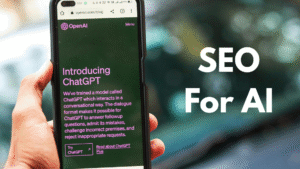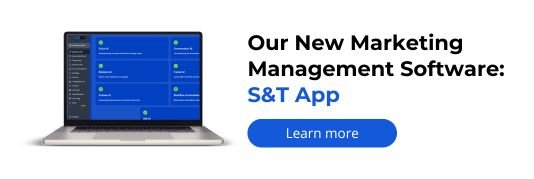Struggling to convert visitors into customers? Google Retargeting Ads might be the key you’re missing.
Every website gets visitors who leave without taking any action—no sign-up, no purchase, no contact. It’s frustrating, especially after investing time and money into attracting them. But what if you could bring those people back?
That’s where Google Retargeting Ad Campaigns come in.
In 2025, retargeting isn’t just a nice-to-have. It’s one of the smartest ways to recover lost leads and convert missed opportunities into paying customers. Google Retargeting Ads can play a vital role in making this happen.
This blog will walk you through exactly how to use Google retargeting campaigns to bring back lost leads, boost conversions, and make your marketing budget go further. If you’re serious about lead recovery, Google Retargeting Ads should be part of your strategy.
What Are Google Retargeting Campaigns?

Google Retargeting Campaigns (also called remarketing campaigns) are a type of online ad strategy that helps you reconnect with people who visited your website but didn’t complete a goal—like making a purchase, signing up for a newsletter, or filling out a contact form.
Using Google Retargeting Ads, businesses can maximize impact from their previous website traffic.
How Does It Work?
Imagine someone visits your website, browses a few pages, maybe even adds something to their cart, but then leaves without buying. Google remembers this visitor using a small piece of code called a remarketing tag (also known as a pixel).
This tag places a cookie in the visitor’s browser.
Google Retargeting Ads track these behaviors effectively across digital touchpoints.
Now, when that person browses other websites, uses apps, or searches on Google, they start seeing your ads. These ads remind them of what they were interested in—and encourage them to come back and complete the action.
Why It Works
People rarely convert the first time they visit a site. In fact, studies show that over 90% of website visitors leave without converting. Retargeting gives you a second (or third) chance to get their attention—and this time, you’re showing up when they’re more familiar with your brand.
With Google Retargeting Ads, you can target warm audiences, increase conversions, and reduce acquisition costs.
Instead of constantly trying to attract new visitors, you’re focusing on the ones who already know you—which usually means higher chances of conversion and lower ad costs.
Why Retargeting Is More Powerful Than Ever in 2025

In 2025, digital marketing has become more competitive than ever. Users are bombarded with ads across websites, apps, and social platforms. That means traditional ads don’t always cut through the noise.
But Google retargeting campaigns still work—because they focus on people who already showed interest in your brand. Google Retargeting Ads use smarter targeting, AI, and automation to deliver better results.
Let’s look at why retargeting is even more powerful today than it was just a few years ago:
1. Smarter Segmentation with AI
Google Ads now uses machine learning to automatically group users based on their behaviors. For example, it can recognize:
- Visitors who spent more than 2 minutes on your pricing page
- People who abandoned their cart after adding high-ticket items
- Returning users who visited three times in one week
This helps you show the right ad to the right person at the right time—all without manual effort.
In fact, businesses using AI-driven targeting in Google Ads have seen up to 33% higher conversion rates, according to Google internal data.
2. Cross-Device Tracking
In 2025, users often switch between devices—mobile, desktop, tablet, even smart TVs. Google now supports cross-device retargeting, which means you can follow a visitor from one device to another.
For example:
- A user clicks your ad from Instagram on mobile
- They browse your site but don’t buy
- Later, they see your retargeting ad on YouTube while watching from a laptop
This seamless experience increases your chances of bringing them back at the perfect moment.
3. Better Budget Control
In 2025, ad budgets are tight—but Google Ads gives you more control than ever. You can:
- Limit how often a person sees your ad (to avoid annoyance)
- Set custom bids for high-intent visitors
- Adjust spending based on performance in real-time
This means retargeting helps you get more value from every marketing dollar.
Setting Up a Retargeting Campaign in Google Ads

Setting up a Google retargeting campaign might sound technical, but once you follow the right steps, it becomes surprisingly simple. In this section, we’ll walk you through the entire process using beginner-friendly language.
These steps work seamlessly with Google Retargeting Ads and reflect the latest campaign setup options available today.
Step 1: Set Up Your Google Ads Account
If you don’t already have one, create a free account at ads.google.com. You’ll manage all your campaigns from this dashboard.
Step 2: Add the Google Ads Remarketing Tag to Your Website
This is a small piece of code (also called a tag or pixel) that you’ll place on your website. It tracks visitors so you can later retarget them with ads.
You can add it manually, or—if you use platforms like WordPress, Shopify, or Wix—install it using Google Tag Manager or a plugin. This tag starts building your audience lists from the moment it’s live.
Pro Tip: Add the tag across your entire website—not just one page—so you can build broader, more flexible audience lists.
Step 3: Create Your Audience Lists
Once your tag is live and starts collecting data, go to the “Audience Manager” in Google Ads.
Here, you can create custom audience lists, such as:
- All website visitors in the last 30 days
- People who visited the pricing page
- Users who abandoned the checkout process
- Visitors who stayed on your blog for more than 2 minutes
You can also choose the duration—how long users remain in the list (e.g., 7, 30, or 90 days).
Step 4: Create a New Campaign
Go back to your main dashboard and click + New Campaign → Choose a goal (e.g., sales, leads, website traffic) → Select Display or Search network.
Then, in the audience targeting section, select the remarketing list(s) you created earlier.
Step 5: Design Your Ads
Now it’s time to create ad creatives that speak directly to your retargeting audience. Some tips:
- Use strong calls to action like “Come Back and Save” or “Complete Your Order”
- Highlight offers like free shipping or discounts to encourage return visits
- Use eye-catching visuals or product images (especially for dynamic remarketing)
You can upload custom banner ads or let Google generate responsive display ads based on your text, logo, and images.
Step 6: Launch and Monitor
Click Publish, and your campaign will go live! But don’t stop there—check your dashboard regularly to see:
- How many clicks you’re getting
- What your cost-per-click (CPC) is
Which audience segments are performing best
This data helps you tweak your campaign for even better results.
Advanced Retargeting Strategies That Work in 2025

Once you’ve mastered the basics, it’s time to level up. In 2025, the most successful businesses go beyond “showing the same ad to everyone” and start using smarter, more customized tactics to get results.
Google Retargeting Ads supports strategies like dynamic remarketing and time-based ad sequences, making your campaigns even more personalized.
Here are some advanced Google retargeting strategies to try this year:
1. Dynamic Remarketing: Show the Exact Products They Viewed
Dynamic remarketing automatically shows ads with the specific products or services someone viewed on your site. This is especially effective for e-commerce.
For example:
If someone looked at red sneakers but didn’t buy, your retargeting ad could show that same pair with a headline like “Still thinking about these? They’re selling fast!”
According to Google, dynamic remarketing can increase click-through rates by 2x compared to static ads because it’s highly relevant and personalized.
2. Time-Based Sequences: Warm Them Up Over Time
Not every visitor is ready to buy right away. You can create ad sequences based on how long ago someone visited your site.
For example:
- Day 1-3: Show a reminder ad with the product image.
- Day 4-7: Add a customer testimonial or review.
- Day 8+: Show a limited-time offer or discount to encourage action.
This strategy keeps your brand fresh in their mind while gradually building trust.
3. Cart Abandonment Campaigns: Recover Lost Sales
If someone adds items to their cart but leaves without buying, that’s a hot lead you can’t afford to lose.
Set up a dedicated campaign that targets only users who abandoned checkout. Combine this with strong incentives:
- “You left something behind!”
- “Still interested? Here’s 10% off”
According to Barilliance, around 70% of online shopping carts are abandoned retargeting can help you win many of them back.
4. Exclude Converters: Don’t Waste Budget
Avoid showing ads to users who have already converted. In Google Ads, simply exclude your “converted users” list from your campaign.
This saves money and makes your ads more efficient. You can also retarget past buyers with upsell or cross-sell offers instead.
How to Measure the ROI of Your Retargeting Campaign

Running a retargeting campaign is only half the job. The other half? Understanding how well it’s working. In 2025, Google Ads gives you powerful tools to track performance and get clear insights into what’s driving real results.
The best part? Google Retargeting Ads now include built-in AI recommendations to optimize spend, segment audiences, and predict conversion probability.
Here’s how to evaluate the return on investment (ROI) of your retargeting efforts:
1. Click-Through Rate (CTR)
CTR shows the percentage of people who clicked on your ad after seeing it.
Formula:
CTR = (Clicks ÷ Impressions) × 100
A high CTR means your ad is relevant and catching attention. For retargeting, a CTR of 0.7% to 1.5% on display ads is considered strong in 2025.
Tip: If your CTR is low, test new visuals, change the headline, or improve your call-to-action.
2. Conversion Rate
This shows how many people completed the goal after clicking your ad—such as a purchase or form submission.
Formula:
Conversion Rate = (Conversions ÷ Clicks) × 100
For retargeting campaigns, a conversion rate between 2% and 6% is healthy. If it’s much lower, your landing page may need improvements.
3. Return on Ad Spend (ROAS)
ROAS tells you how much revenue you earned for every dollar spent on ads.
Formula:
ROAS = Revenue from Ads ÷ Ad Spend
For example, if you made ₹5,000 from ₹1,000 in ad spend, your ROAS is 5.0 (or 500%).
Target ROAS Benchmarks (2025):
- E-commerce: 4x–6x
- SaaS or Lead Gen: 3x–5x
Anything below 3x may need deeper analysis.
4. Cost Per Acquisition (CPA)
CPA helps you understand how much you’re paying to get each conversion.
Formula:
CPA = Total Ad Spend ÷ Number of Conversions
A lower CPA means you’re getting more results for less money. Use it to compare performance across different audience lists or creatives.
5. View-Through Conversions
Not everyone who sees your ad clicks on it immediately. Some return later by typing your website directly or searching your brand on Google.
View-through conversions track those who saw (but didn’t click) your ad and later converted. This helps you capture the full picture of your ad’s impact.
You can enable this in your campaign settings under “Conversions.”
6. Engagement Metrics
Don’t just rely on conversions. Track behaviors like:
- Time on site
- Pages per visit
- Bounce rate
These show how interested users are after returning—and whether they’re moving deeper into your funnel.
Conclusion
In 2025, the rules of digital marketing may be evolving—but one truth remains: most visitors won’t convert the first time they land on your site.
That’s why Google retargeting ad campaigns are so powerful. They help you reconnect with people who already know your brand, reignite their interest, and bring them back when they’re more likely to take action.
Whether you’re running an e-commerce store, offering professional services, or promoting a B2B product, retargeting lets you make the most of every visitor you’ve worked hard to attract.
Google Retargeting Ads are your best bet to stay competitive and recover leads efficiently.
Start your Google retargeting campaign today—and turn lost leads into loyal customers.
This blog is written by Tejas Lokhande from Trigacy. The images have copyrights from their respective sources.







